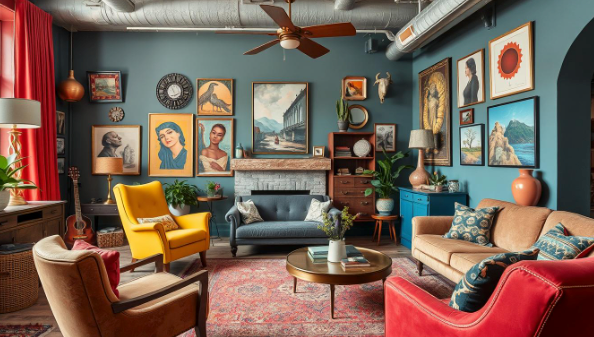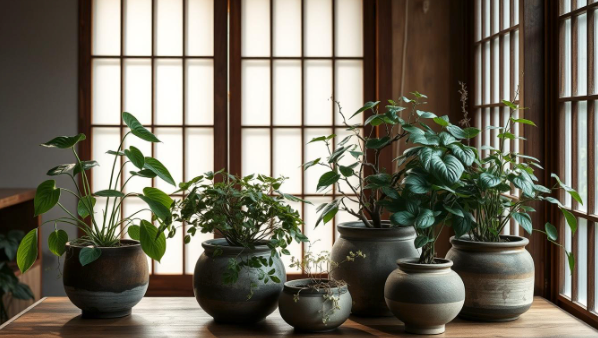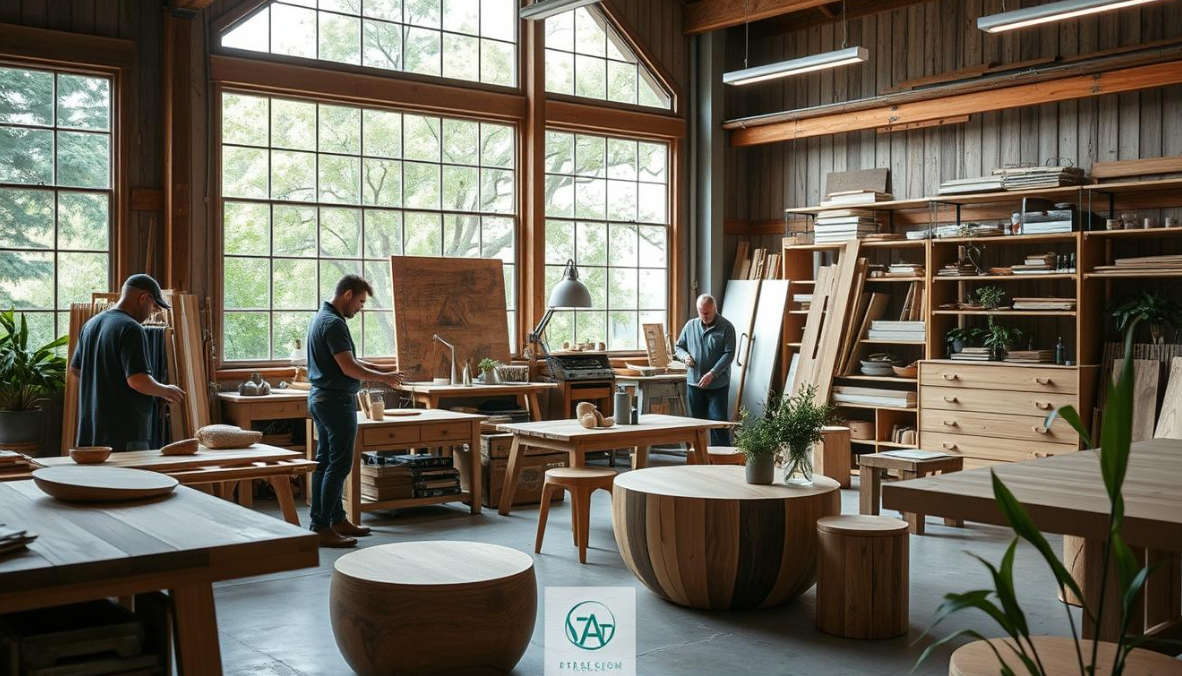Eclecticism is a philosophy of combining styles that gives a lot of freedom, but requires some experience and intuition. In interior design, eclecticism allows you to combine different interior styles, creating a unique and coherent space. To achieve this effect, you need to understand how to combine interior styles without chaos.
In eclecticism, keeping a limited palette of colors and patterns is key to avoiding overdoing it. The 60-30-10 rule, which states that 60% of the space should be in the dominant style, 30% in the secondary style, and 10% accessories or accents, can be useful in creating a cohesive space. Eclecticism also allows for the use of a variety of textures, which adds depth and dynamics to the space.
You will learn how to combine different interior styles without chaos, and how to create a coherent and harmonious space. Eclecticism is not only a collection of random objects, but also the art of creating an interior that is full of character and individuality. For example, combining industrial style with glamour creates a contrast between raw materials and luxurious fabrics, which can be an interesting solution in interior design.
What is eclecticism in interior design?
Eclecticism is a style that combines different eras, styles and materials, giving great freedom in interior design. It comes from the Greek "eklektikos", which means "choosing the best". This style allows for the combination of very diverse motifs, such as smooth surfaces with expressive marble drawings.
In eclecticism, you can combine different styles , such as minimalism, boho, modern classic and glamour style. Combining colors is key, and basic combinations that work well together are: beige and brown, white and gray, and white and black. Using different textures on the walls, such as glossy and matte, can improve the aesthetics of the room.
Basic assumptions of the eclectic style
Eclectic style is characterized by combining at least several different styles. Scandinavian, vintage , boho and industrial elements can be combined in eclectic arrangements. In the case of maintaining uniform, bright walls, you can introduce heavily decorated furniture or fabrics.

Oak desk vogel M 120x60 cm black
The Differences Between Eclecticism and Random Mixing of Styles
Eclecticism differs from the random mixing of styles, as it requires some experience and intuition. In eclecticism, most elements should be covered by a deliberate and thoughtful chaos. The use of spot lighting emphasizes the variety of textures, which increases the visual appeal of the space.
The history of eclecticism in design
The eclectic style originated in the second half of the 19th century. Eclecticism allows for the mixing and matching of different furnishings, which leads to a unique interior design. The eclectic style network can introduce elements of a gold or silver frame in a mirror, and the motifs of the paintings can vary from landscapes, portraits, to abstractions, depending on the combined styles.
Principles of selecting elements in the eclectic style
Eclectic style is a combination of different elements that create a coherent and harmonious space. Selecting elements in this style requires sensitivity and experience. The principles of selecting elements are key in eclecticism, because they allow you to create an interior that is full of character and individuality.
When selecting elements in an eclectic style, you should follow the rules such as:
- selecting elements that are in line with the overall style of the interior,
- taking into account colors and textures,
- maintaining proportion and harmony.
In an eclectic style, you can combine different styles and eras to create a unique and interesting space. The selection of elements should be thoughtful and deliberate to avoid visual chaos.
Colors and patterns as a bond between different styles
In eclecticism, colors and patterns play a key role in creating a coherent and harmonious space. The color palette should be carefully selected to combine different styles and eras into a single whole. According to , colors and patterns are key in eclecticism because they allow for the creation of a coherent and harmonious space.
Color palette in eclecticism
The color palette in eclecticism should be diverse, but also coherent. You can choose a few dominant colors and use them in different design elements, such as furniture , decorations and lighting . Examples of color palettes in a mixed style can include: earthy tones, contrasting combinations (blacks and whites with intense accents) and pastel tones.
Combining patterns and textures
Combining patterns and textures is another important element in eclecticism. You can combine different patterns and textures, such as wood, metal, fabrics, and ceramics, to create a unique and interesting space. It is worth remembering that 75% of interior designers emphasize the importance of balancing smooth and textured materials in eclectic arrangements.
The role of lighting in connecting spaces
Lighting plays an important role in bringing a space together and creating a harmonious atmosphere. You can use different light sources, such as lamps, chandeliers and floor lights, to create a unique and interesting space. Remember that lighting can be used to highlight different design elements and create a sense of depth.

Wooden chair rise with blue legs
In eclecticism, colors , patterns , color palette , and lighting are key elements that help create a cohesive and harmonious space. Remember to carefully choose a color palette, combine patterns and textures, and use lighting to create a unique and interesting space.
Eclectic style furniture - selection and arrangement
In eclectic style, furniture plays a key role in creating an interior full of character and individuality. The selection of furniture should be thought out to create a coherent and harmonious space. You can combine furniture from different eras and styles, such as Scandinavian, boho or industrial style, to achieve a unique expression.
When choosing furniture, you should pay attention to several important factors. First, you should choose furniture that is in muted colors, such as white, gray or beige, to avoid chaos. Then, you can add furniture in intense colors, such as red, blue or green, to give the interior character. It is also important that the furniture is chosen with textures and patterns in mind, to create a harmonious whole.
Here are some tips that can help you choose furniture in an eclectic style:
- choose furniture in subdued colors as a base,
- add furniture in intense colors to give the interior character,
- pay attention to the textures and patterns of the furniture to create a harmonious whole,
- combine furniture from different eras and styles to create a unique expression.

The eclectic style allows for experimentation in design, without having rigid rules. You can combine furniture and accessories from different eras and styles to create an interior that is full of life and emotion. Therefore, when choosing furniture, you should listen to your own preferences and ideas to create a space that is unique and meets your needs.
Balance between old and new in interiors
Creating interiors in an eclectic style requires the ability to combine elements from different eras. This allows you to personalize the space and give it a unique character. In an eclectic living room combined with a kitchen, you can often find vintage furniture next to modern accessories, which can introduce stylistic diversity .
Vintage and modern
The proportions of elements from different eras are key to creating a coherent and harmonious space. This can be achieved by choosing a common color palette that increases visual coherence. Lighting, both decorative and functional, plays a key role in highlighting different zones in the living room with kitchen.
It is worth remembering that the eclectic style attracts people who are open to stylistic diversity .
That’s why it’s important to find the right balance between old and new, so that the interior is both unique and functional. Using vintage elements and modern accessories can create a space that is both elegant and comfortable.
Eclecticism in practice: how to combine different interior styles without chaos?
In eclectic interior design, practice is key to creating a space that is full of character and individuality. Combining styles requires feeling and experience to avoid chaos and create a harmonious whole. One of the most important elements in eclectic design is eclecticism , which allows you to combine different styles and eras in one space. To achieve this, you need to take the time to match all the decorative elements and choose a practice that will allow you to create a coherent whole.
Space planning methods
Space planning is key to creating an eclectic design. Consider combining styles and choose elements that complement each other. You can also use the 60-30-10 rule , where 60% of the space is taken up by the dominant style, 30% by the secondary style, and 10% by accessories or accents.
Techniques for harmoniously combining styles
To create a harmonious whole, you should use the techniques of harmonious combination of styles . You can use a neutral color base, such as white, beige or gray, and add eclecticism by combining different styles and eras. You should also remember about practice and avoid a chaotic arrangement of elements. In eclectic interior design, eclecticism and practice are the key to creating a space that is full of character and individuality. By combining styles and choosing the right elements, you can create a harmonious whole that will suit your needs and preferences.
The most common mistakes in eclectic interior design
When creating eclectic interiors, many people encounter similar mistakes that can ruin the entire effect of the arrangement. One of the most common mistakes is the lack of consistency of elements, which happens in 70% of cases concerning eclectic interiors. Another common mistake is over-stylization, which can make the interior look chaotic.
To avoid these mistakes, you should pay attention to a few key issues. First, you should choose a few main styles that will form the basis of the arrangement. Then, you should choose elements that will work together, such as furniture, colors and textures. It is also important not to over-stylize the interior, but rather create a coherent and harmonious space.
How to avoid over styling
Avoiding over-stylization is key to creating eclectic interiors. To avoid this, you should choose a few main elements that will form the basis of the arrangement and not add too many additional elements. You should also pay attention to colors and textures to create a cohesive and harmonious space.
Pitfalls in selecting elements
Traps in the selection of elements are another mistake that can destroy the entire effect of the arrangement. To avoid these traps, you should choose elements that will work together, such as furniture, colors and textures. You should also pay attention to the proportions of the elements to create a coherent and harmonious space.

When creating eclectic interiors, you need to pay attention to many issues to avoid mistakes that can ruin the whole effect of the arrangement. Thanks to this, you can create an interior that will look beautiful and harmonious, and will also reflect an individual style and character.





